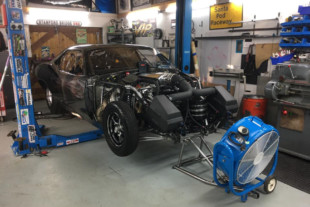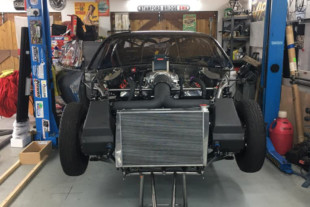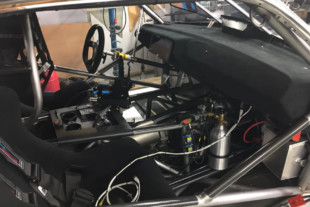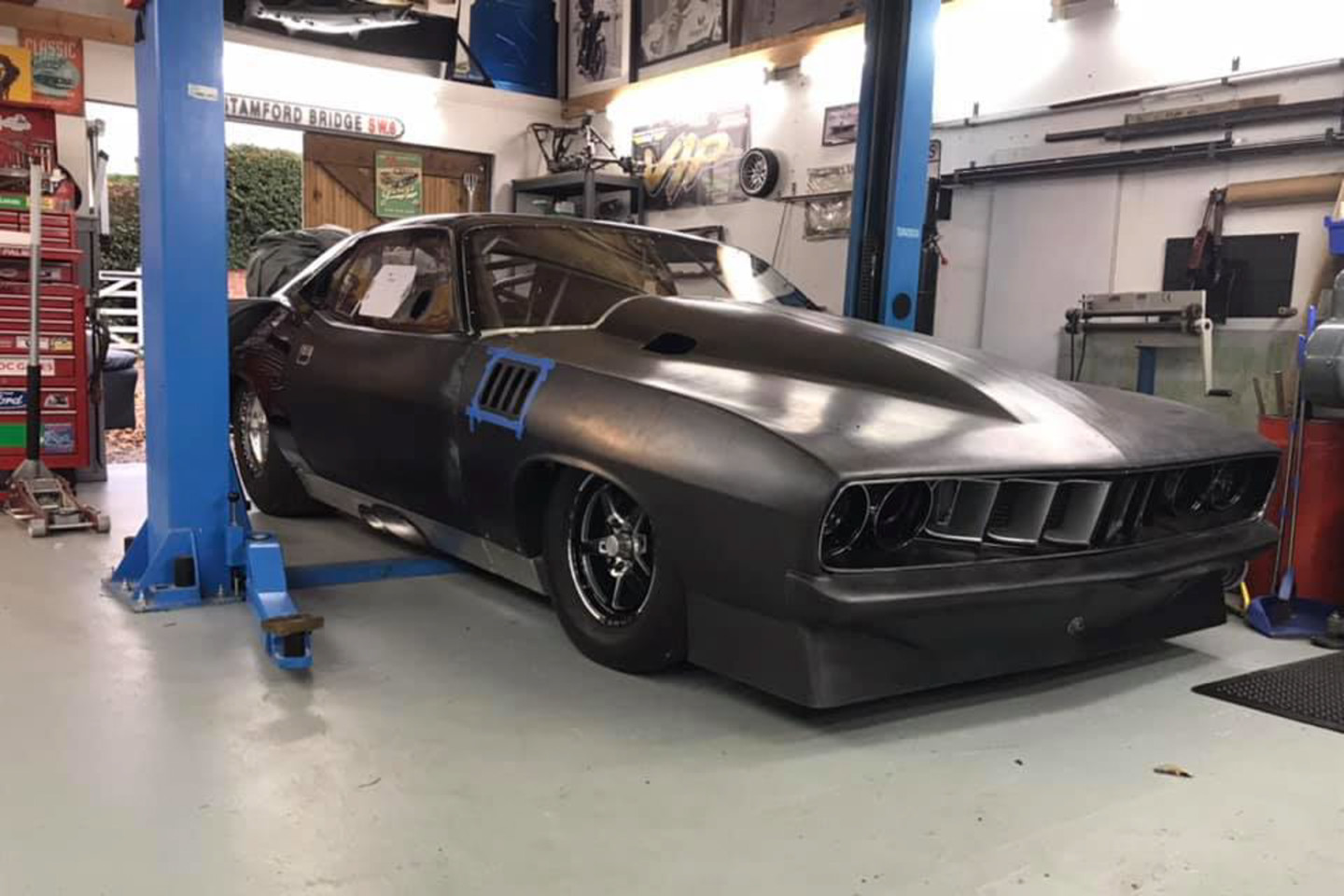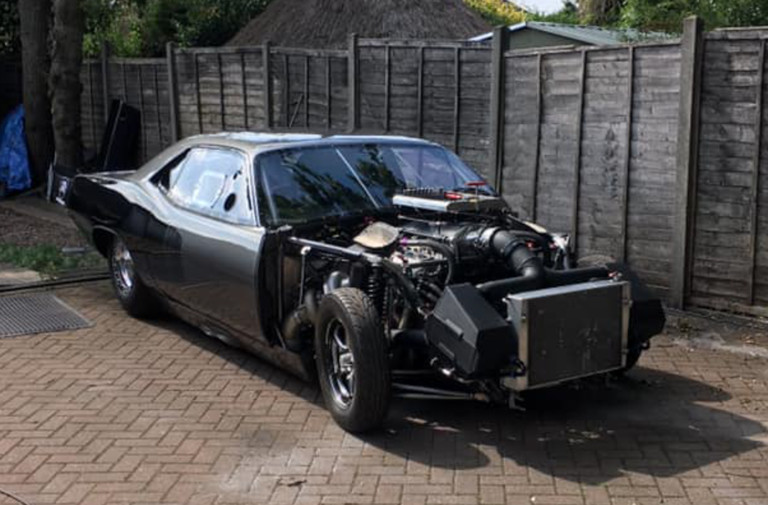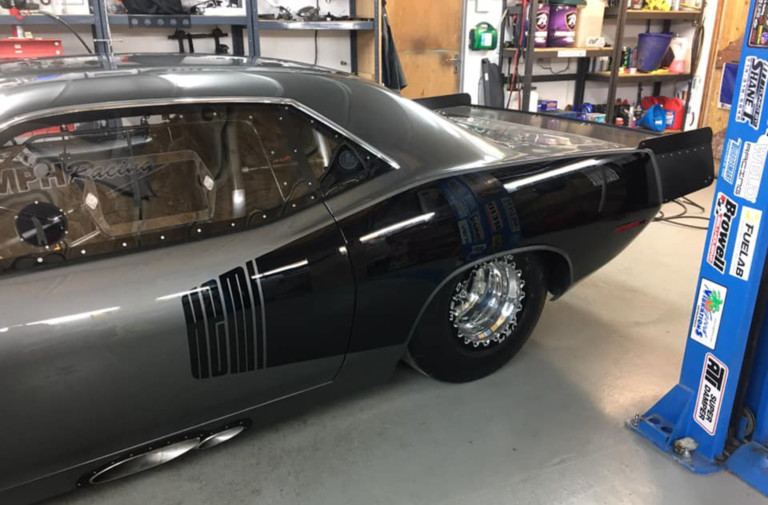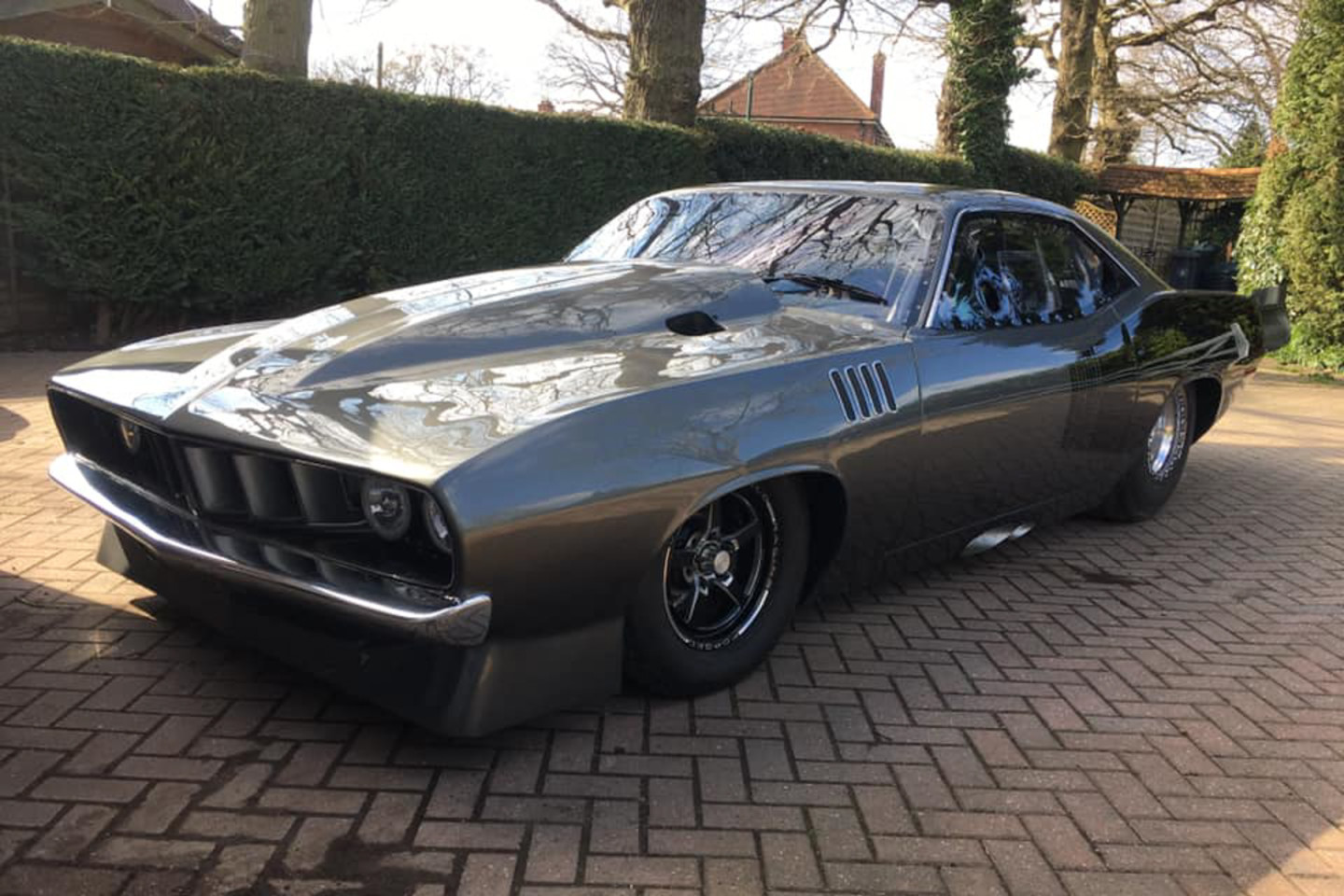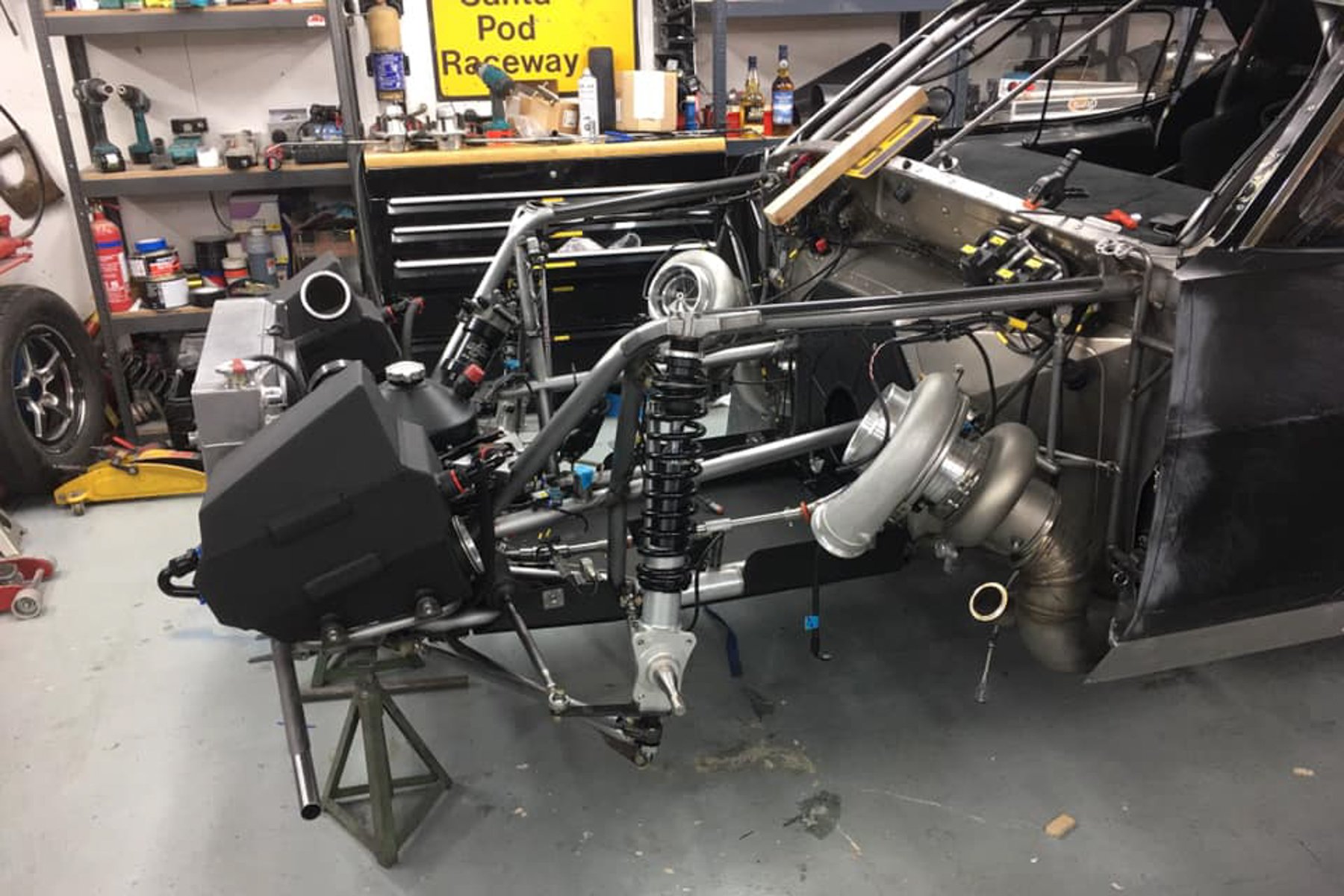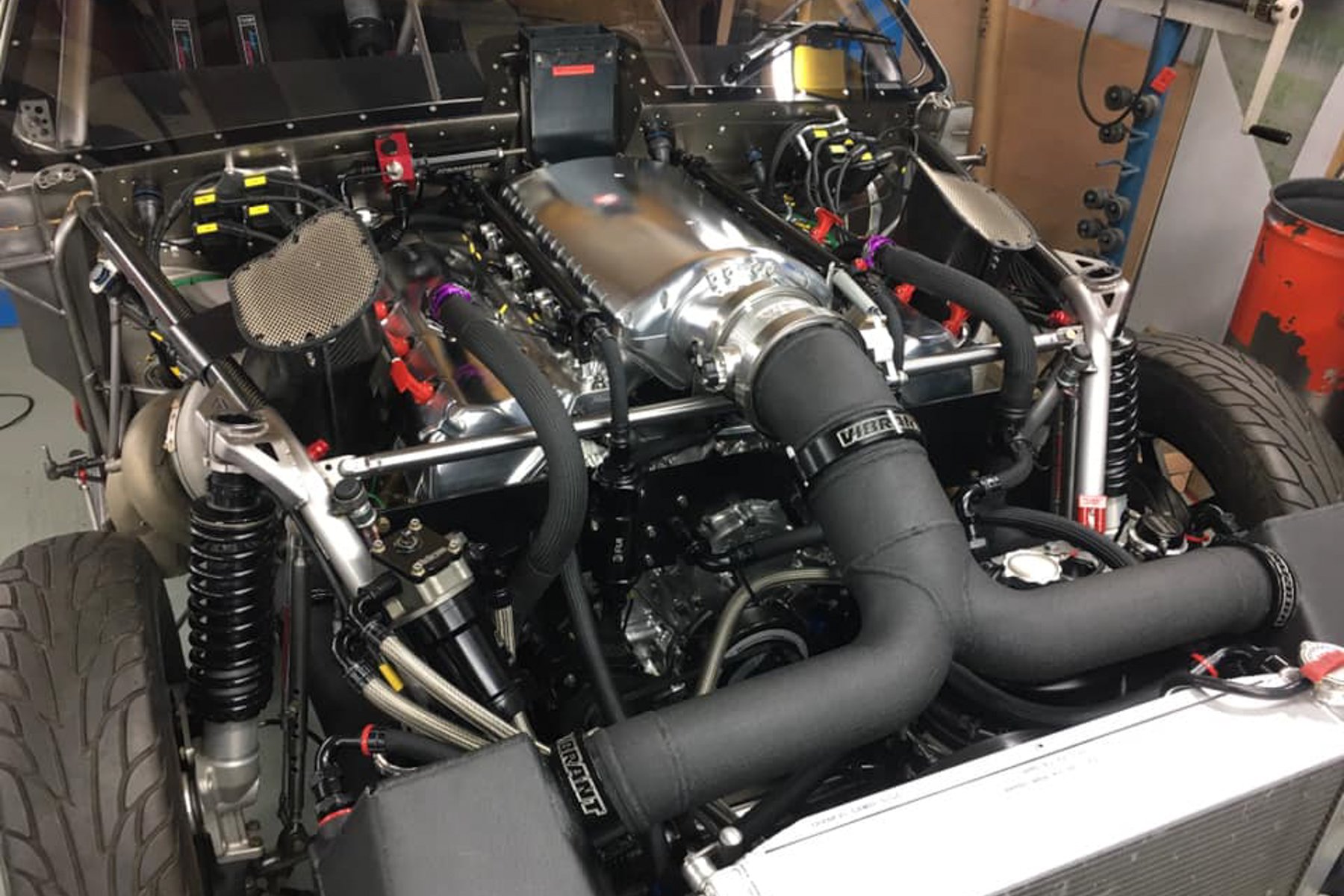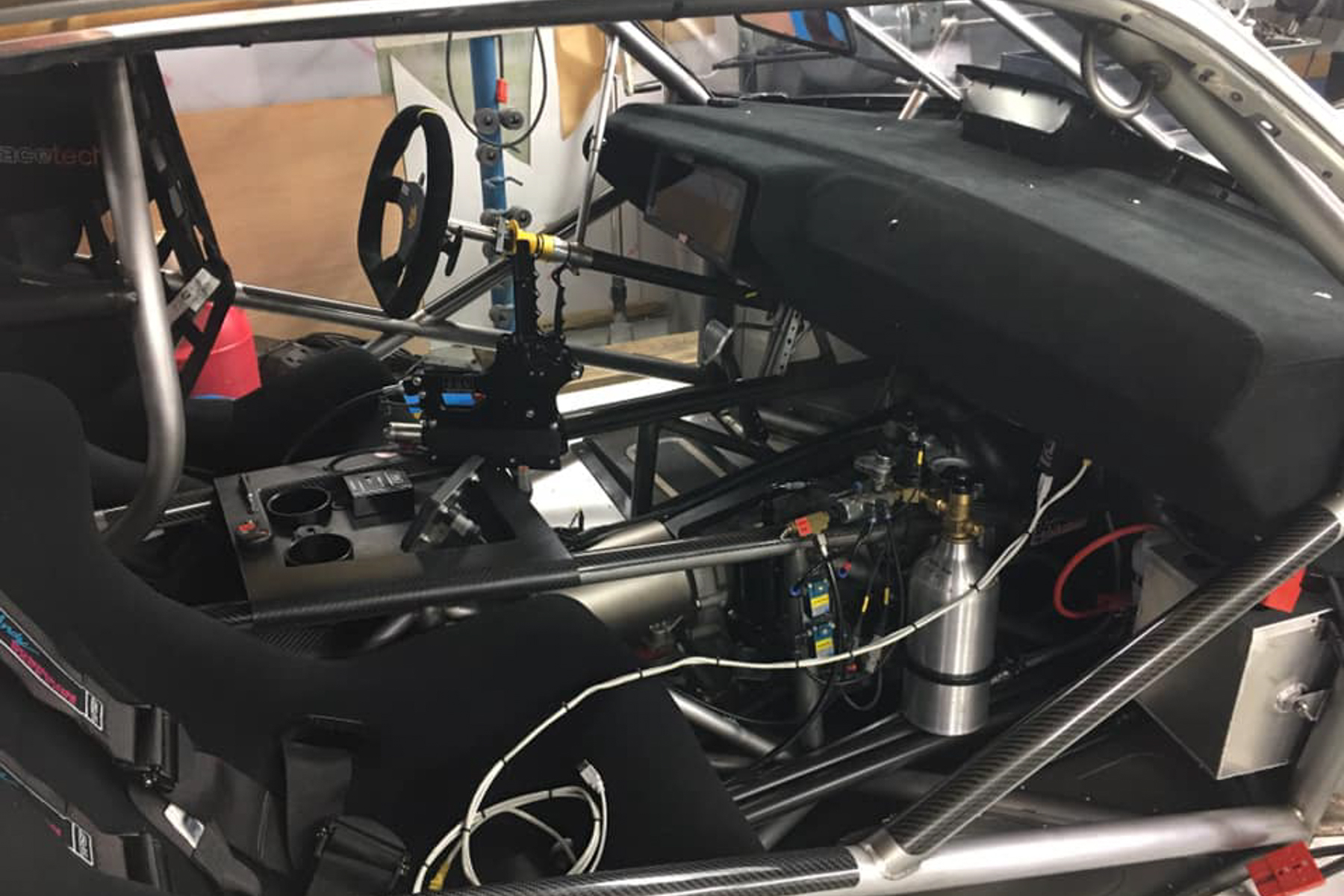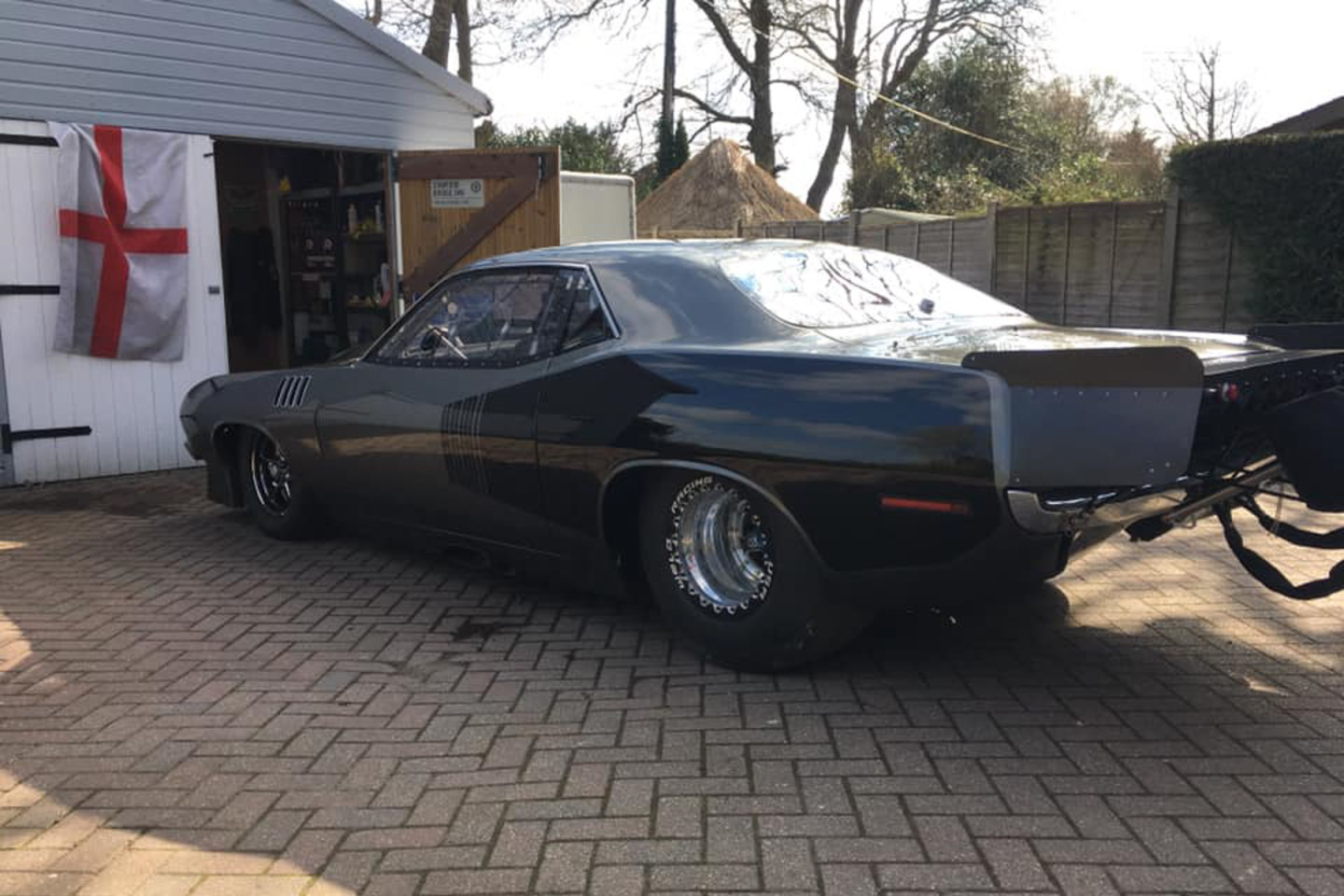Mark Sheridan’s 1971 Plymouth Barracuda lives a double life as a street car and a racecar. Mark, along with his friends Paul Hobby and Harry Palmer have put a lot of time into this classic Mopar to make it one killer street machine.
If you look up “gearhead” in the dictionary, chances are you might actually see a picture of Mark. He grew up with a father who was a mechanic that had a fleet of nice cars and was into racing. Mark also spent time working with a family friend who was into motorsports and traveled across Europe with him turning wrenches.
At the age of 17, Mark met Paul, who was building a custom PA Cresta, and they became fast friends. It was right around that time that Mark got his first Mopar, a 1973 Dodge Challenger. Money was tight and the Challenger was Mark’s only car, so he had to learn how to work on it himself. Mark, Paul, and eventually Harry, used to beat on his Challenger on the way home from Riverside Cruisers car club meets and had a ball doing it.
The trio enjoyed hooning around in the Challenger a lot, but it was tame compared to Paul’s big-block powered Dodge Aspen. The car wasn’t much to look at, but Mark had a blast rowing the Aspen’s gears on the way to 12-second passes at the track. While a 12-second pass doesn’t sound impressive by today’s standards, back then it was quick, and it hooked Mark into drag racing.
Mark’s drag racing circle of friends also included Colling and John Mullen, two brothers who imported a HEMI-powered Mopar that Mark really loved. In 1985, Collin was ready to sell a Barracuda he owned for a good price. Mark wanted the car, so he calmly explained to his wife he needed their life savings so he could purchase it. His logic was the Cuda would be a good investment, he could fix the car up and sell it for a nice profit. And just like that, Mark was the proud owner of his 1971 Cuda.
The Cuda wasn’t running when Mark took possession of it, but he quickly remedied that situation in a matter of days. Mark planned on just making a few modifications to the engine, but soon he was elbows deep in a full rebuild. After he got the car running, he decided it was time for a paint job and some changes to the engine bay for good measure. Mark got bored with the car and wanted to go faster, so with the help of Paul and Harry, the Cuda was gutted to reduce weight, and it got a proper roll cage, too.
Mark wanted even more speed, so he contacted his friend Shane Powel to convert the car to a strut-style front end and change the rear suspension to a ladder bar setup. The stock doors, fenders, hood, and trunk were also replaced with composite parts.
“The need for speed continued so I bought a set of original B1 heads for the engine. Not long after that I obtained a Koffel block and crank, too. By this time, the Cuda had evolved into a track-only car. I sourced all the engine rebuild parts through Dave Koffel and I ended up with a 543 cubic-inch mill. I also rebuilt the transmission with race parts to help withstand the extra power, plus I got a new converter. I never realized that combo’s full potential, but learned a lot of things along the way, especially with trying to keep oil to the top of the heads, as it initially loved to eat pushrods. It was a great motor and it loved to rev,” Mark says.
The Cuda eventually found its way into Andy Robinson’s chassis shop where it received a narrowed Ford 9-inch rearend and was tubbed for bigger rear tires. The car continued to evolve after this, so Mark and Paul built their own tube bender so they could do more of their own work. This led to the duo building their first funny car cage.
When Mark’s family started to grow and his career took off, the Cuda was relegated to just holding down the concrete in his shop. Mark and Paul started riding motorcycles because it was just easier to do that rather than load the Cuda up and spend a full day at the track. After a couple of nasty motorcycle crashes, their wives said it was time to park the bikes, which meant it was time to figure out what to do with the Cuda.
Mark wanted to enjoy the Cuda, so he started doing some research on how to make it more street-friendly. After talking with Tim Banning, Mark secured a 572 cubic-inch fuel-injected HEMI with a 14-71 supercharger. Tim and Mark worked together to find a way to make a BigStuff3 run the big HEMI. The fuel injection learning curve was pretty steep for Mark, but he eventually was able to get it sorted out. Mark mainly drove the Cuda on the street, but when he did take it to the track it ran an impressive best of 9.10 at 151 MPH.
The 9-second passes were good for a while, but in 2011 turbos began to grow in popularity as the power-adder of choice — this got Mark’s attention and stoked his go-fast flame again. Mark did some research and decided to pick up a pair of 88mm snails, along with a new intake for his HEMI. He worked with Andy Frost, driver of the famed Red Victor machine, to help line out a torque converter for his Powerglide transmission. Andy also introduced Mark to tuner Shane Tecklenberg, who helped take Mark’s Cuda to a new level.
In 2014 Mark, Paul, and Harry decided to race the Cuda in the Street Eliminator category. This class didn’t have any limits on what engine you could run, but required you to use pump gas, run in full street trim, and complete a 28-mile cruise. The Cuda shined in the class and during its first event went from its prior best of a 9.08 at 150 MPH to a staggering 8.01 at 172 MPH.
Unfortunately, during the event, the Cuda’s engine started to develop some issues and the chassis was only certified to go 7.50. Mark wanted to step things up, and what was going to be a quick update to the car to make this happen turned into a massive rebuild. The car was delivered to Andy and Luke Robinson at Robin Race Cars so they could build a completely new chassis for the Cuda.
While the car was at the chassis salon, Mark got to work on securing a new engine for the Mopar. A 521 cubic-inch Noonan Race Engineering HEMI block with waterjackets was ordered along with a set of Noonan cylinder heads. Carl Stevens at Xtreme Racing Engines helped Mark pick out the engine’s rotating assembly, and supplied the parts. Mark also picked up a new Reid TH400 transmission case, Neal Chance torque converter, and MoTeC M1 ECU package. A pair of Precision Turbo & Engine 98mm Gen II Pro Mod turbos were selected to provide boost.
Mark and Harry picked the car up from Robinson Race Cars and started to work on getting the car plumbed, making windows, and other tasks to get the Cuda finished. Kevin from KSV Looms wired the car and created a custom wiring harness for all of the MoTec hardware.
Building a car of this caliber isn’t easy, and trying to do it in the UK presents its own set of challenges.
“I wanted to build as much of this car myself as I could, it has just taken a lot longer than I wanted. When you’re making pretty much all of the custom bracketry and other parts things just take time. Plus, some of the parts took far longer than I expected to make it here. That’s the downside of the UK — we don’t have the luxury of the USA shops on our doorstep, and nearly everything needs to be imported. Shipping Fees, duties, and taxes can be a real killer at times,” Mark says.
The planning and hard work that Mark and his team put into the Cuda have really paid off. Mark knows that this build wouldn’t have come together without the assistance of a lot of people.
“I really need to thank Harry and Paul for all of their help with this project. Andy and Luke at RRC did a fantastic job at with the car. Noonan Race Engineering, Bruder Machinery, and Xtreme Race Engines helped so much with the engine. I also need to thank Shane Tecklenberg, Kevin at KSV Looms, Andy Frost, Jeff Bohr, Luke Biggin, Dale at DRE, FEV Fire Systems, Rick at Firecore, Leo at Barnes Systems, Wright Fabrications, and Dollar Motorsports,” he said.
Mark Sheridan and his Mopar-crazed friends have really built a special car. This 1971 Barracuda lives in that rare territory that’s inhabited by the best street/strip cars in the world.

